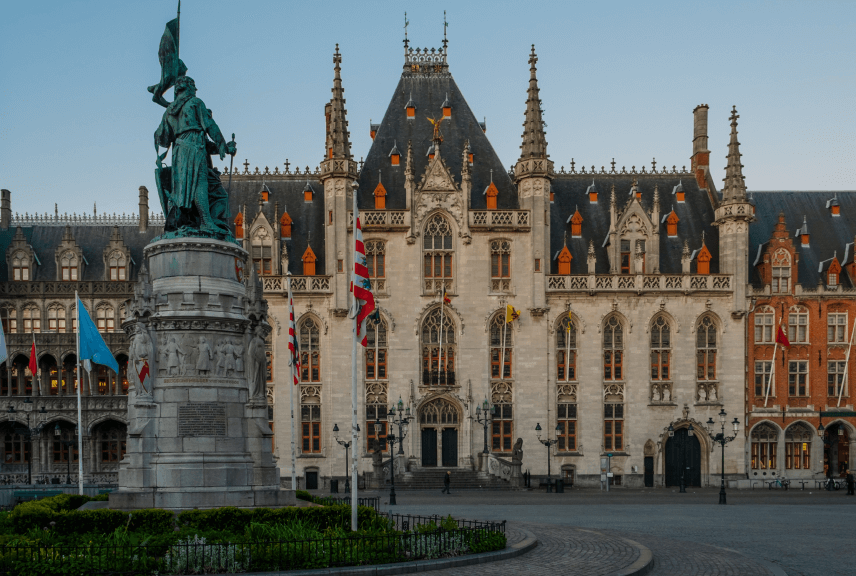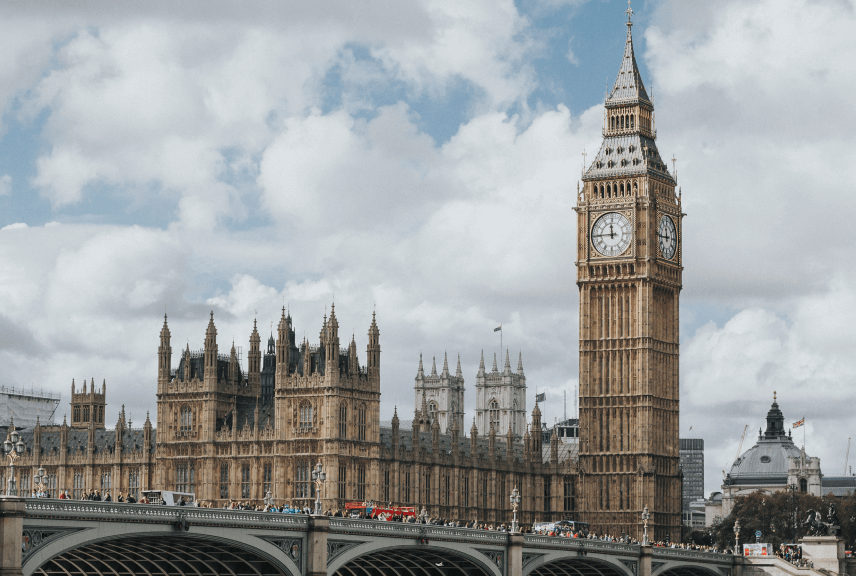Wednesday, December 4, 2024
In a surprising twist, overtourism protests across Spain have done more than highlight the challenges of mass tourism—they’ve also driven a remarkable increase in tourist interest. According to a new Travel and Tour World (TTW) report, international tourist spending in Spain surged by 15.5% in October 2024, reaching an impressive €11.9 billion. This surge came alongside a 9.5% increase in international arrivals, with 8.9 million visitors flocking to the country, many curious to experience or understand the overtourism phenomenon.
Protests Sparking Tourism Interest
While these protests aimed to address the negative impacts of mass tourism, such as overcrowding, rising housing costs, and environmental strain, they inadvertently created a new draw for travelers. Social media coverage and news reports have fueled curiosity about the protests, making them a compelling addition to the reasons people visit Spain.
Some travelers see the protests as an authentic cultural experience, offering a raw glimpse into the lives of locals grappling with tourism’s effects. Others visit Spain to understand what overtourism is all about, turning the issue into a must-see attraction alongside traditional landmarks like La Sagrada Familia and the beaches of Ibiza.
Key Overtourism Protests in 2024
Several large-scale protests in Spain throughout 2024 played a significant role in bringing global attention to the overtourism issue.
Canary Islands: Rallying for Sustainability
- When: April 20, 2024
- What Happened: Tens of thousands protested across Tenerife, Gran Canaria, and Lanzarote, calling for stricter regulations to combat environmental damage and housing affordability issues.
Palma de Mallorca: Fighting for Resources
- When: May 25–26 and July 21, 2024
- What Happened: Over 20,000 activists demanded limits on flights, cruise ships, and non-resident accommodations, highlighting tourism’s impact on local housing and resources.
Barcelona and Málaga: Pushing Back Against Overcrowding
- When: July 6, 2024
- What Happened: In Barcelona, 3,000 residents protested rising living costs caused by overcrowding, with some using water pistols to spray tourists in frustration. Málaga residents, meanwhile, rallied against gentrification and rising rents.
Valencia and Ibiza: Advocating for Limits
- When: October 19 and May 24, 2024
- What Happened: Valencia hosted its first major protest, focusing on tourism’s impact on housing and local communities. Ibiza activists called for limits on tourist accommodations to preserve the island’s environment and culture.
The Numbers Behind the Boost
The TTW report highlights just how much tourism surged in October 2024:
- €11.9 billion in tourist spending, a 15.5% year-on-year increase.
- Over 8.9 million international visitors, up 9.5% compared to October 2023.
- €1,327 average expenditure per visitor, marking a 5.5% increase.
- €191 daily spending per visitor, up 2.9%.
These numbers showcase how overtourism protests unintentionally boosted Spain’s already thriving tourism sector. Visitors are spending more on immersive experiences, including fine dining, cultural activities, and accommodations in prime locations.
The Social Media Effect
Social media has been a key driver behind this boost. Viral videos of protests, crowded streets, and passionate demonstrations have piqued global interest, drawing attention to both the beauty and challenges of Spain’s tourism hotspots. Platforms like Instagram and TikTok have made overtourism protests part of the cultural narrative, prompting travelers to see it for themselves.
This increased visibility aligns with broader trends in experiential travel, where tourists prioritize meaningful and unique experiences. Observing or even participating in protests adds an unconventional and authentic layer to their trips.
Locals’ Mixed Reactions
For many Spaniards, the unintended tourism boost is bittersweet. While the economic benefits are undeniable, the increased numbers exacerbate the very problems the protests aim to address: overcrowding, environmental strain, and skyrocketing rents.
However, some communities are leveraging the spotlight to advocate for sustainable tourism practices. Tour operators now offer educational tours that focus on the impact of overtourism, helping travelers understand its effects while promoting responsible tourism.
A Path Toward Balance
Spain’s tourism authorities are using this moment to promote sustainable practices. Campaigns encourage visitors to explore lesser-known destinations and travel during off-peak months. By diversifying tourism offerings, Spain hopes to ease the pressure on popular hotspots like Barcelona and Mallorca while spreading economic benefits more evenly across the country.
Turning a Challenge into an Opportunity
The TTW report sheds light on an ironic yet fascinating reality: overtourism protests, meant to discourage mass tourism, have instead fueled a 15.5% boost in spending and a 9.5% increase in arrivals. Spain’s enduring charm, combined with the global interest in overtourism protests, is drawing in travelers curious to witness this modern phenomenon firsthand.
With record-breaking spending and visitor numbers, Spain’s tourism sector remains a global leader. By focusing on sustainability and innovation, the country has a unique opportunity to turn this unexpected surge into a long-term win for both visitors and locals.
Ultimate City Guide to Spain: Discover the Heart of Spanish Culture

Spain is a country where history, culture, and modern vibrancy blend seamlessly. From sun-soaked beaches to historic landmarks, Spain’s cities offer something for every type of traveler. Here’s your guide to exploring the best cities in Spain, each with its own unique charm.
Barcelona: The Vibrant Coastal Gem
Why Visit: Barcelona is a city that dazzles with its architectural wonders, Mediterranean beaches, and a buzzing nightlife.
Top Attractions:
- La Sagrada Familia: Antoni Gaudí’s masterpiece that’s still under construction but is already an iconic landmark.
- Park Güell: A whimsical park filled with colorful mosaics and surreal designs.
- Gothic Quarter: Wander through narrow streets filled with history, shops, and cafes.
- Barceloneta Beach: Relax on the golden sands after a day of sightseeing.
Food to Try:
- Tapas and Pintxos: Small dishes to share with friends.
- Crema Catalana: A rich dessert similar to crème brûlée.
Best Time to Visit: Spring and fall, when the weather is pleasant, and the crowds are manageable.
Madrid: The Capital of Culture and Art
Why Visit: Madrid is the beating heart of Spain, offering world-class museums, royal palaces, and vibrant street life.
Top Attractions:
- Prado Museum: Home to masterpieces by Velázquez, Goya, and Bosch.
- Royal Palace of Madrid: Explore the opulent rooms of the largest palace in Europe.
- Retiro Park: A green oasis perfect for a leisurely boat ride or a stroll.
- Gran Vía: Madrid’s iconic shopping street with theaters and stunning architecture.
Food to Try:
- Churros con Chocolate: A sweet treat for breakfast or an afternoon snack.
- Cocido Madrileño: A hearty chickpea stew.
Best Time to Visit: Autumn and spring, when the weather is mild and cultural events abound.
Seville: The Soul of Andalusia
Why Visit: Seville is a city of passion, with flamenco music, Moorish architecture, and vibrant festivals.
Top Attractions:
- Seville Cathedral and La Giralda: The largest Gothic cathedral in the world.
- Alcázar of Seville: A stunning royal palace with intricate Moorish designs.
- Plaza de España: A breathtaking square with a canal for rowing boats.
- Triana District: The birthplace of flamenco, full of charm and lively bars.
Food to Try:
- Tortilla de Camarones: Shrimp fritters.
- Gazpacho: A refreshing cold tomato soup.
Best Time to Visit: Spring, especially during the Feria de Abril festival.
Granada: The Jewel of Moorish Spain
Why Visit: Granada captivates visitors with its stunning Alhambra palace and scenic views of the Sierra Nevada mountains.
Top Attractions:
- The Alhambra: A UNESCO World Heritage Site that’s a masterpiece of Islamic art and architecture.
- Albaicín Quarter: Explore this historic neighborhood with narrow, winding streets.
- Sacromonte: Known for its caves and flamenco performances.
Food to Try:
- Free Tapas: Granada is one of the few cities where tapas are often complimentary with drinks.
- Piononos: A local pastry treat.
Best Time to Visit: Spring or early autumn, when the weather is ideal for exploring.
Valencia: The City of Arts and Sciences
Why Visit: Valencia is a city that beautifully combines historic charm with futuristic architecture.
Top Attractions:
- City of Arts and Sciences: A modern architectural marvel featuring an aquarium, planetarium, and museum.
- Turia Gardens: A green space that winds through the city, perfect for biking or walking.
- Valencia Cathedral: Claims to house the Holy Grail.
Food to Try:
- Paella Valenciana: The birthplace of this iconic Spanish dish.
- Horchata: A refreshing drink made from tiger nuts.
Best Time to Visit: March, during the Las Fallas festival, where giant papier-mâché figures are burned in spectacular displays.
Bilbao: The Gateway to the Basque Country
Why Visit: This northern city offers a mix of industrial heritage and cutting-edge modernity.
Top Attractions:
- Guggenheim Museum: A stunning building housing contemporary art.
- Casco Viejo: The old town, filled with pintxo bars and local shops.
- Zubizuri Bridge: A sleek white footbridge over the Nervión River.
Food to Try:
- Pintxos: The Basque version of tapas, often skewered on toothpicks.
- Txakoli: A sparkling Basque white wine.
Best Time to Visit: Late spring or early autumn for mild weather and fewer crowds.
Málaga: Sun, Sea, and Culture
Why Visit: Málaga offers the perfect mix of beaches, history, and art.
Top Attractions:
- Picasso Museum: Celebrate the city’s most famous son.
- Alcazaba of Málaga: A well-preserved Moorish fortress with stunning views.
- Málaga Cathedral: Known as “La Manquita,” or “The One-Armed Lady,” due to its unfinished second tower.
Food to Try:
- Espetos: Grilled sardines on skewers.
- Fritura Malagueña: A mix of fried seafood.
Best Time to Visit: Summer for beach vibes or December for a festive atmosphere.
Toledo: The City of Three Cultures
Why Visit: Known for its blend of Christian, Muslim, and Jewish influences, Toledo feels like stepping back in time.
Top Attractions:
- Toledo Cathedral: A Gothic masterpiece.
- Alcázar of Toledo: A historic fortress with a commanding view of the city.
- Jewish Quarter: Rich in history and architecture.
Food to Try:
- Mazapan: A sweet almond-based treat.
- Carcamusas: A traditional meat stew.
Best Time to Visit: Spring or autumn for pleasant weather and fewer tourists.
Tips for Traveling in Spain
- Siesta Time: Many shops and restaurants close in the afternoon, so plan accordingly.
- Public Transport: Spain has an excellent network of trains and buses, making it easy to explore multiple cities.
- Cultural Etiquette: Spaniards eat late—dinner is often after 9 PM.
Spain is a country that never fails to enchant. Whether you’re chasing the energy of Barcelona, the culture of Madrid, or the historic charm of Toledo, you’re sure to leave with unforgettable memories.


















